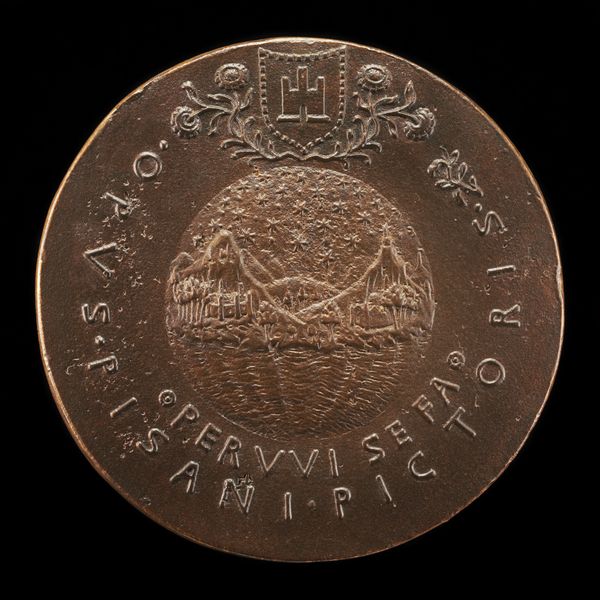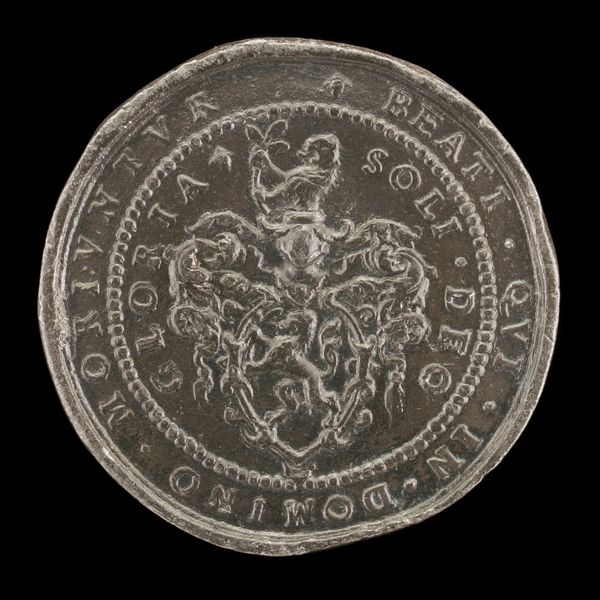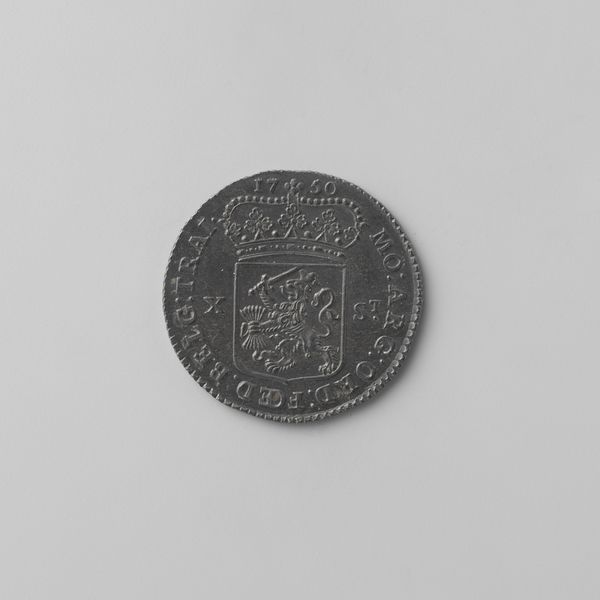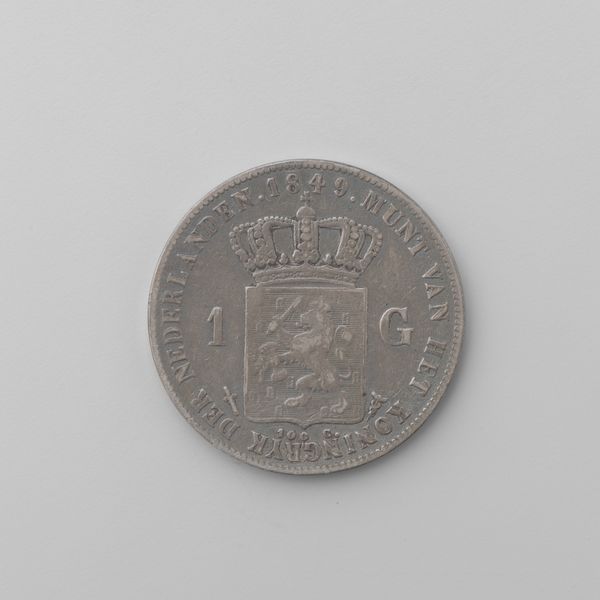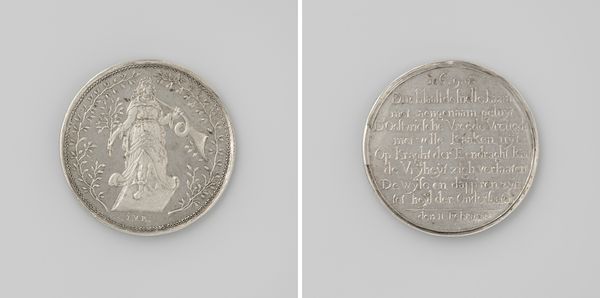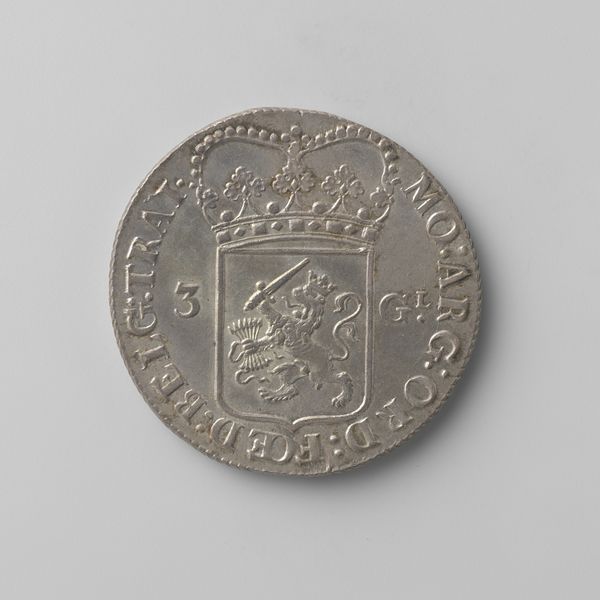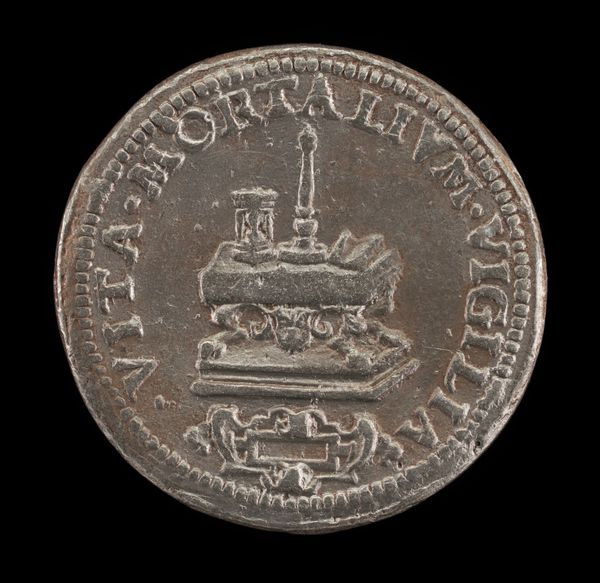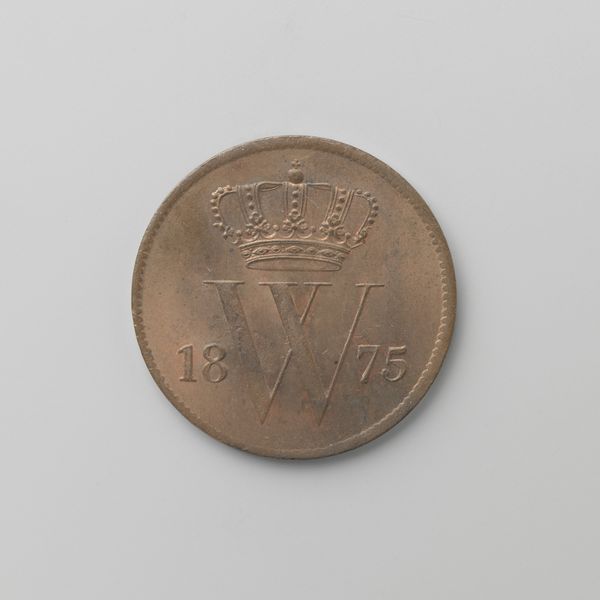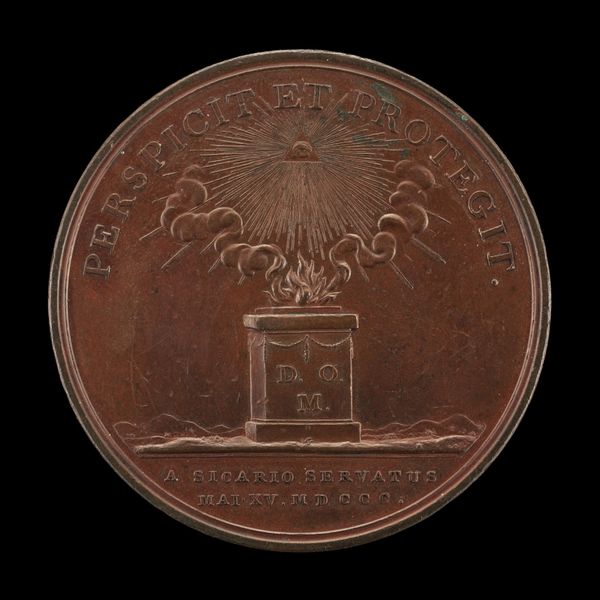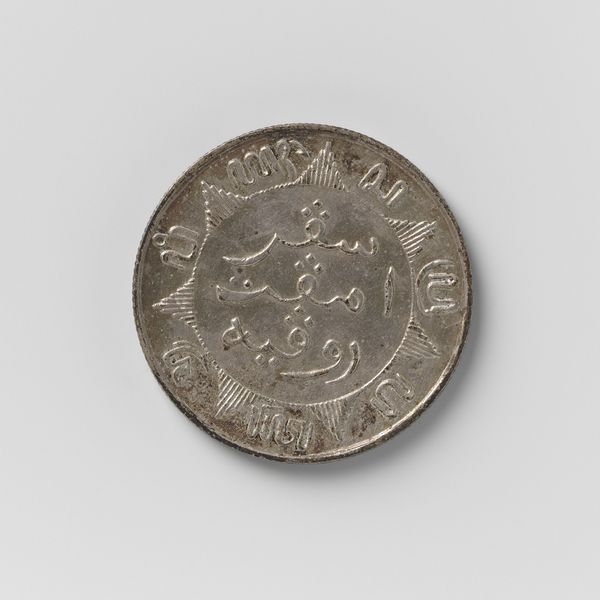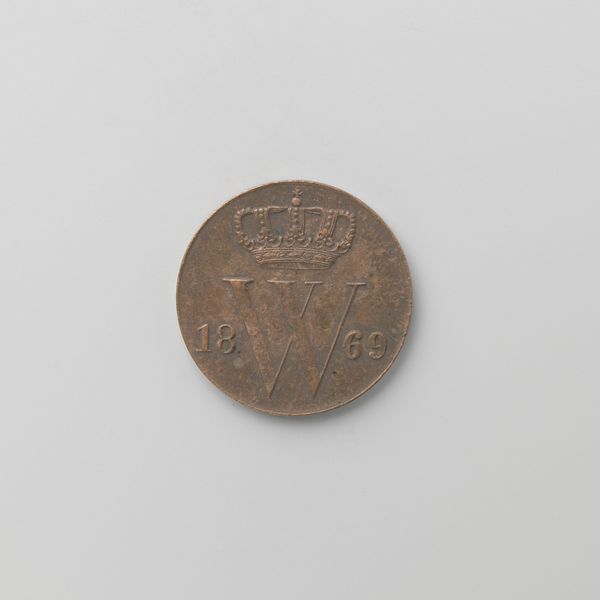![Tudor Portcullis Crowned [reverse] by Hans Daucher](/_next/image?url=https%3A%2F%2Fd2w8kbdekdi1gv.cloudfront.net%2FeyJidWNrZXQiOiAiYXJ0ZXJhLWltYWdlcy1idWNrZXQiLCAia2V5IjogImFydHdvcmtzLzIwOGI1YTI2LWIwNmMtNGE5Yy1iYmE5LTJjOWNhMjQ1MzYzNi8yMDhiNWEyNi1iMDZjLTRhOWMtYmJhOS0yYzljYTI0NTM2MzZfZnVsbC5qcGciLCAiZWRpdHMiOiB7InJlc2l6ZSI6IHsid2lkdGgiOiAxOTIwLCAiaGVpZ2h0IjogMTkyMCwgImZpdCI6ICJpbnNpZGUifX19&w=3840&q=75)
silver, metal, relief, sculpture
#
portrait
#
medal
#
silver
#
metal
#
sculpture
#
relief
#
11_renaissance
#
sculpture
Dimensions: overall (diameter): 5.93 cm (2 5/16 in.) gross weight: 88.64 gr (0.195 lb.) axis: 12:00
Copyright: National Gallery of Art: CC0 1.0
Editor: This is a silver medal created in 1526 by Hans Daucher titled "Tudor Portcullis Crowned [reverse]". The grid-like form, precisely rendered in metal, strikes me as both a symbol of strength and perhaps a kind of confinement. What’s your read on this piece? Curator: Well, the portcullis itself, especially when crowned, is highly charged symbolically. Consider its role within the Tudor dynasty. The portcullis was a badge used by the Beauforts, from whom Henry VII’s mother descended. This badge represented a claim to the throne won on the battlefield, by force, secured behind fortifications. Editor: So, its presence signified power and legitimate rule. Curator: Precisely. But legitimacy, especially for the early Tudors, was always contested, wasn’t it? Think about the Wars of the Roses and Henry VII's efforts to consolidate power after usurping Richard III. So, Daucher’s rendering could also be interpreted as highlighting the *precariousness* of power. Who commissioned this piece? What purpose did it serve? It would tell us more about the political motivations behind its creation. Editor: I see what you mean. The crown makes it seem solid, but that grid, those bars…it's like the power is always defended. Curator: Exactly. And the inscription surrounding the image, ‘SEC VRITAS AL TERA’, meaning "the other security" in Latin, could reference a sense of needing additional security to hold the reign. Do you think this tells us about a ruler that felt insecure? Editor: I didn't realize how much the history plays into understanding it. I’m looking at this piece in a completely different light now. It seems much more loaded with social and political meanings than I initially thought! Curator: These objects are never neutral. Exploring those contexts opens up richer, more complex ways of seeing.
Comments
No comments
Be the first to comment and join the conversation on the ultimate creative platform.
